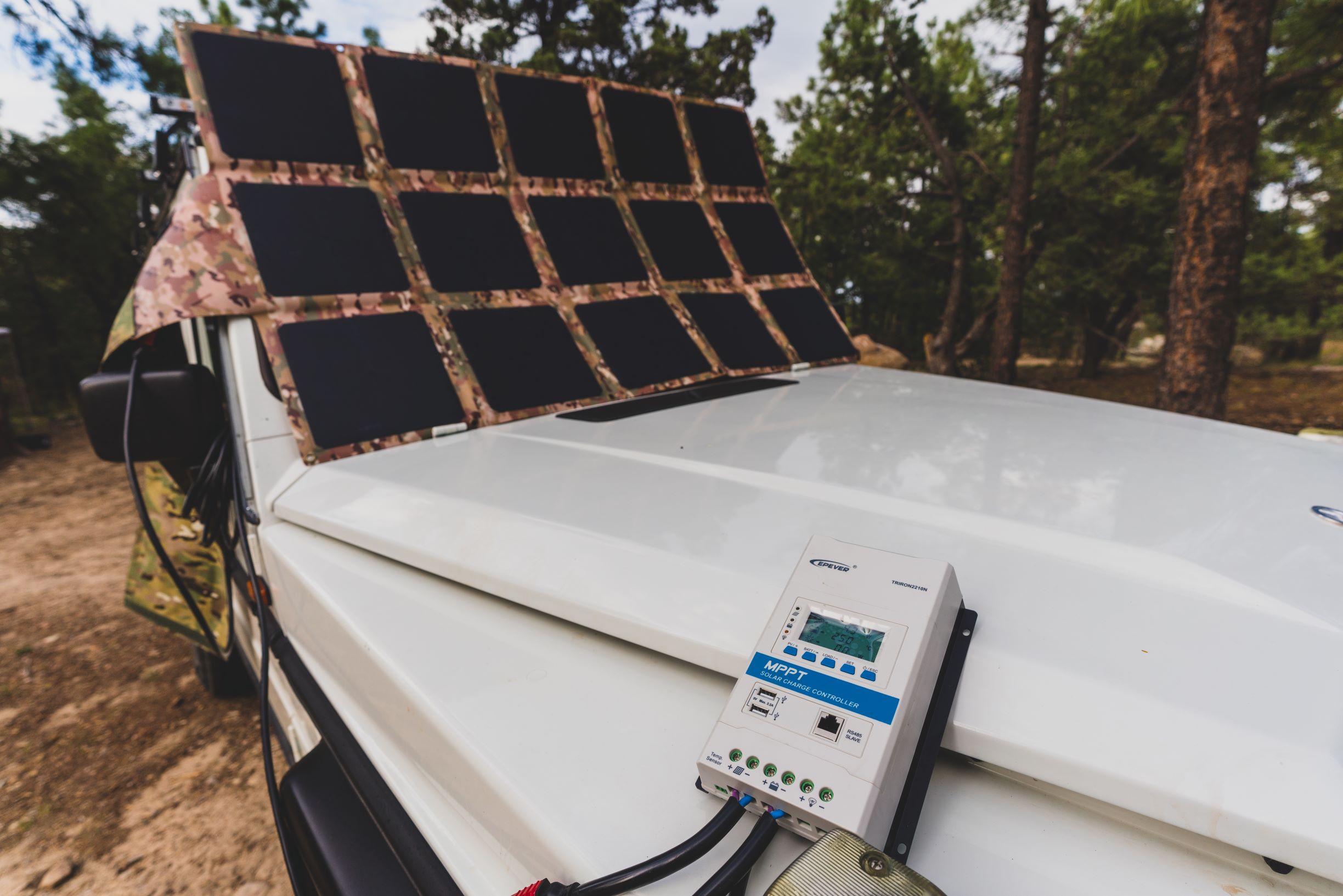One of the cornerstones of overland travel is self-reliance, a trait inspired by the remote locations we visit and the unpredictability of vehicle-based backcountry exploration. We may be parked for days on a secluded beach in Baja, needing to keep both the fresh fish and the Coronas cold. Or we might have accidentally left the headlights on during that dawn hike, only to return to a dead starting battery. The reality is that solar power options like this portable bugout kit are a critical tool for our adventures. Dare we say an even higher priority purchase than a second battery, a subject we have reviewed in the past in our article on choosing between storing or making power. A 200+ watt solar panel solves problems a secondary battery never can: unlimited power.
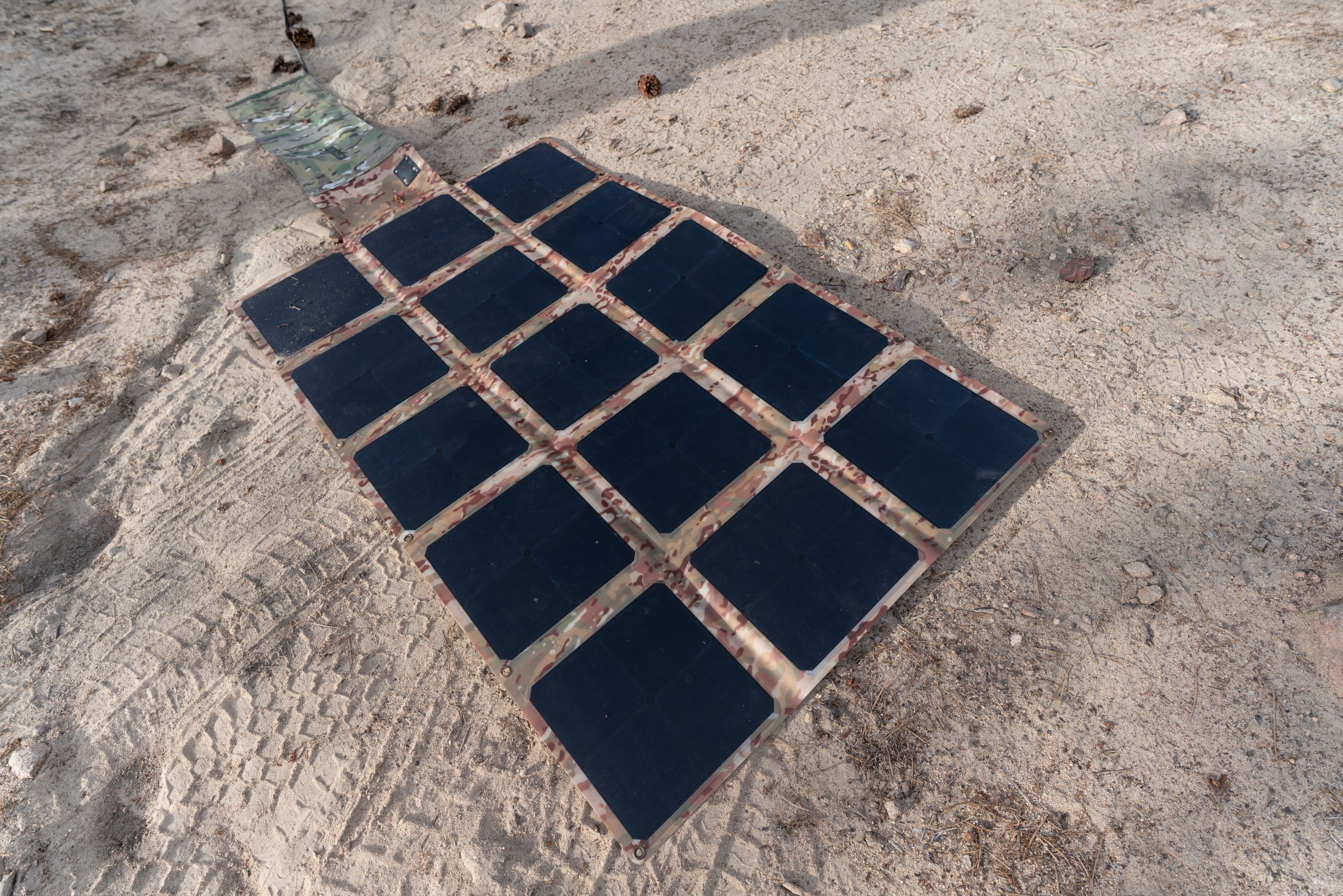
The panel not only folds easy but is extremely durable. It is also prized for the high output when compared to the total surface area, nearly on par with solid panels.
Selecting Our Next Portable Solar Kit
At the Expedition Portal offices, all of our solar charging solutions were outdated or not powerful enough to support vehicle requirements. We also had a few rigid panels, but they typically require permanent installation or are bulky to store. It also used to be that the only way to achieve sufficient output was to use a rigid panel, but the technology of solar blankets have rapidly advanced, now allowing over 200 watts from a 13-pound foldable blanket. Solar charge controllers have also improved to permit Maximum Power Point Tracking (MPPT), which optimizes the voltage matching and current between the panels and the battery.
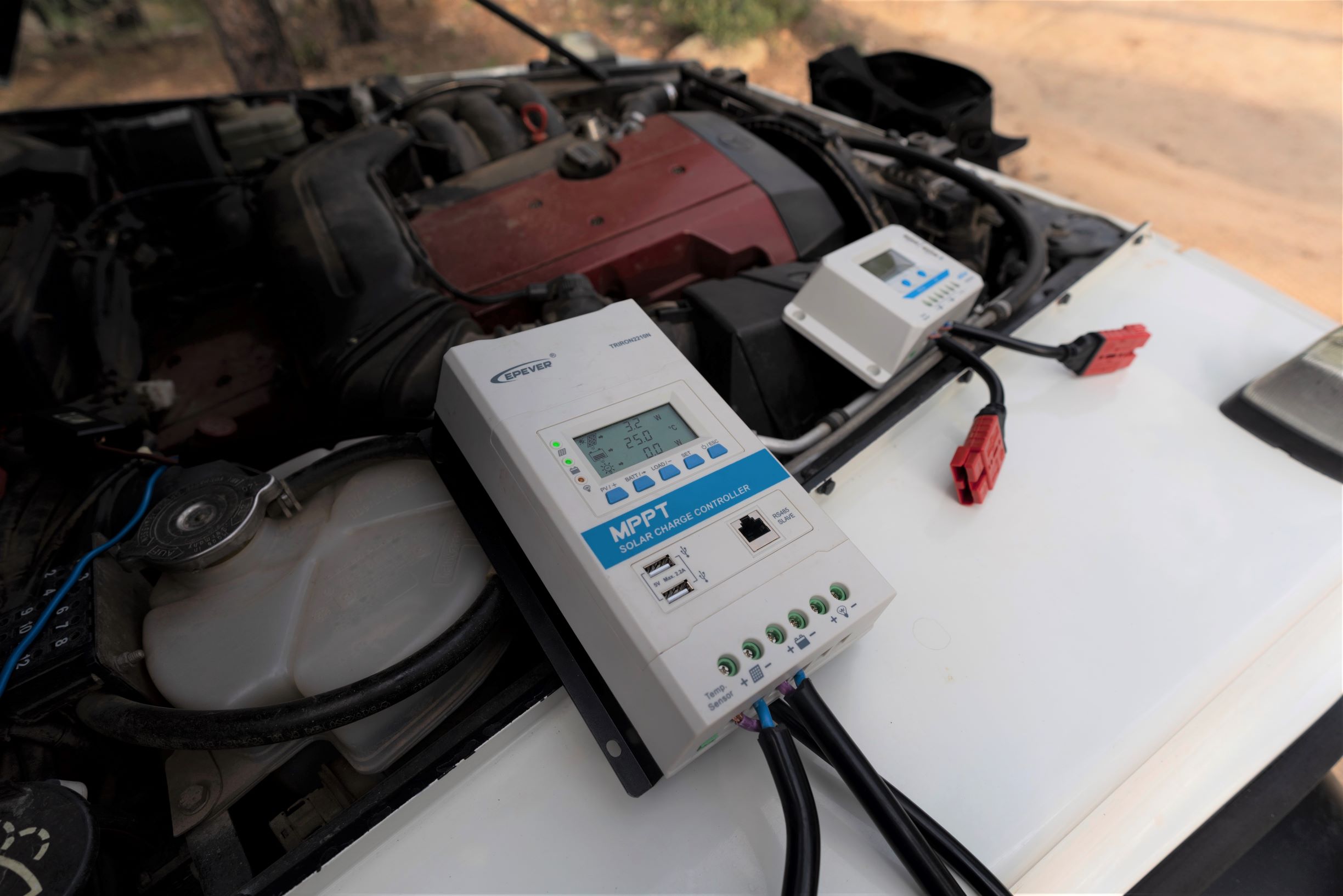
There are two controllers available, depending on the kit. For the 215-watt, there is an MPPT, while the lower wattage units use a smaller, non-MPPT version.
This resulted in some additional research, and a call to Rene Strinholm from Off Grid Trek, a veteran-owned company out of Canada that specializes in premium solar solutions for overland applications. Rene was willing to come to Prescott, Arizona, after the Rocky Mountain Overland Rally and deliver a 215-watt panel kit called the BugOut, and spend some time showing me the details of the newest technology and solutions.
What impressed me initially was Rene’s knowledge of solar systems and the time he had taken to research the best options for vehicle-based travelers. For example, many of us already have Anderson connectors on our vehicles, so Rene ensured that all of the kits use those. He also created adapters to popular proprietary connectors like Goal Zero or Inergy portable power packs. Digging into the kit further revealed 5-millimeter, heavy-duty wiring (maybe even too thick of gauge) to reduce voltage drop under peak charging.
About the Panel Kit
The panel has a 4-inch Anderson pigtail that connects to an included 16-foot extension cable. This allows for mounting the solar panel away from the vehicle, on top of an awning, or affixed to the rafters of a roof tent. I liked Rene’s suggestion of placing the panel against the front windscreen, which serves as both a sun visor and a safe position off the ground, etc. The extension is then connected to the MPPT charge controller, which has a daylight readable LCD display, and two high-speed USB outlets. This permits grabbing the bugout kit and your communications devices and charging them separate from the vehicle or any batteries. The charge controller is a bit larger than expected, but that provides a reasonable price point, good heat dissipation, and large wiring clamps.
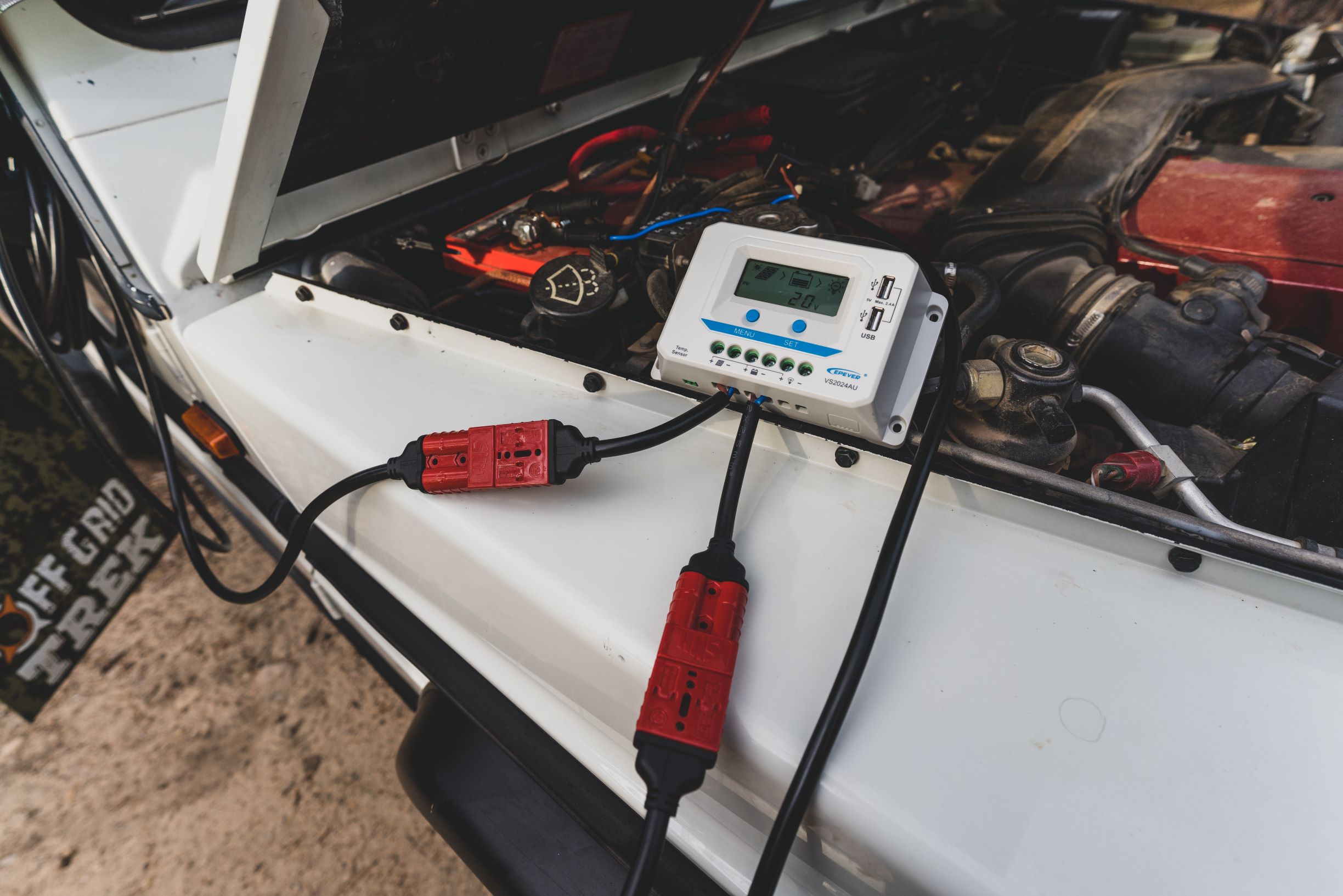
This image shows the Anderson connection method to the smaller controller. The quality of the connections and wiring is impressive.
The panels for this kit are advanced ETFE Laminated units with built-in PCB boards. This construction allows for maximum durability, while also permitting the foldability and flexibility a solar blanket requires. The solar cells are generation 3 sun power units, with a 23.7 percent photovoltaic efficiency. When unfolded, the panel measures 68 x 36 inches, and only 12.6 inches square when folded.
Conclusions
Just like any quality kit, a proper solar system is an investment, which is also why I prefer a portable kit that uses a folding solar blanket. This allows for the entire system to be stored securely when not traveling, or moved from vehicle to vehicle. None of the components in this kit requires a permanent installation, which means it can also be used during a power outage, at the soccer tournament, or for a long list of other powering needs.
I have not found much that I would do differently with this kit beyond the bulk of the MPPT controller. As a nice to have, it would be good to see some different color options for the panel. Camo has its place, but in some developing countries, anything with camouflage can be considered suspect or labeled as military “hardware.” I learned that one the hard way with satellite phones or BGANs in Central Asia. Simple gray or black would do. Otherwise, this is an overland solar kit designed for overlanders. It does exactly what we need, and is built for decades of use. offgridtrek.com
Pros:
High performance and lightweight folding panel
Comprehensive kit includes all required cables, controllers, and a storage bag
215-watt panel will power all typical camp draws
Cons:
The charge controller is a bit bulky for a portable kit
Would prefer more subtle colorway options for the panel (like gray or black)
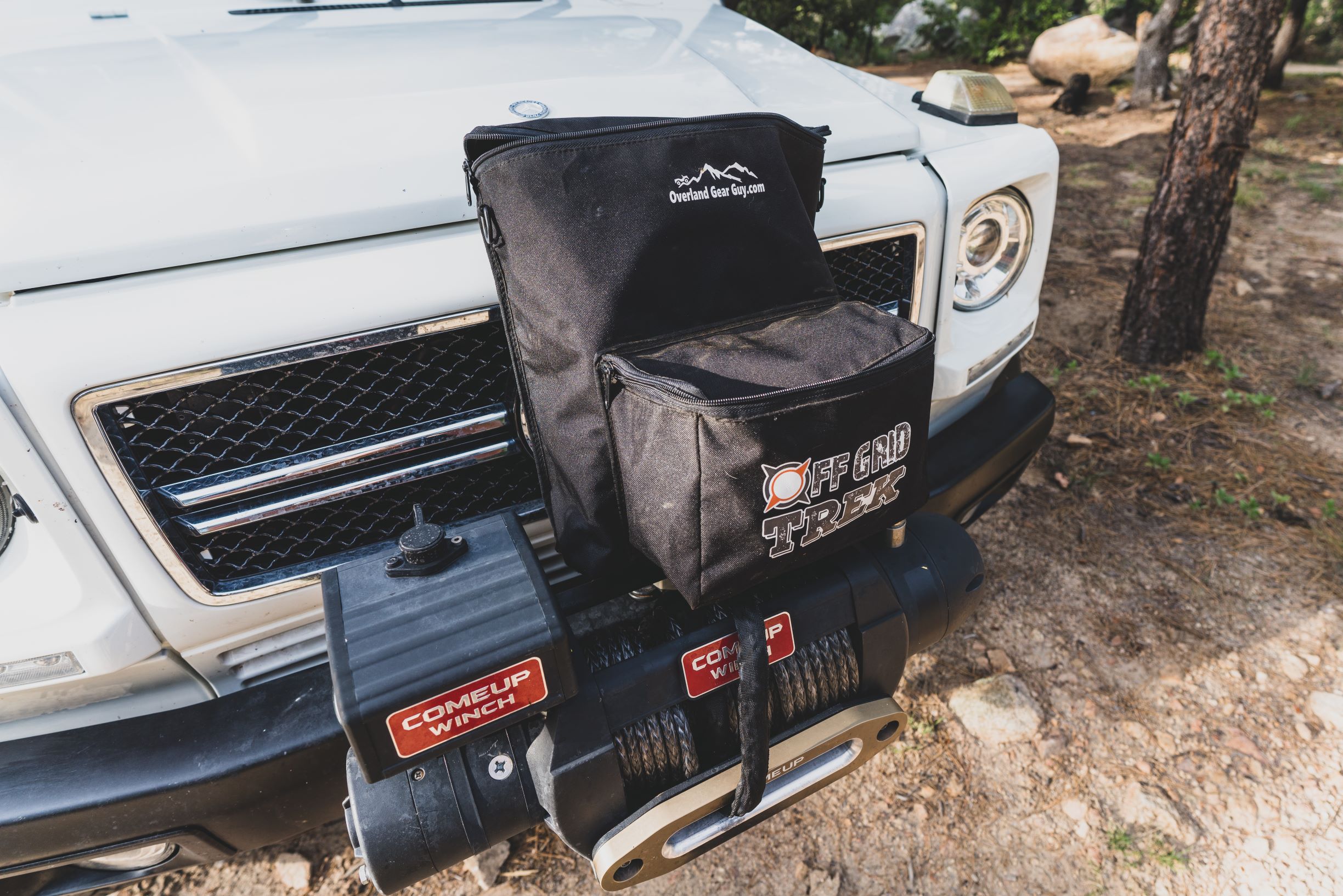
The Overland Gear Guy worked with Off Grid Trek to produce the BugOut bag.


